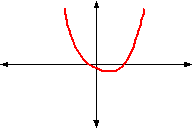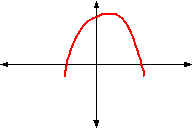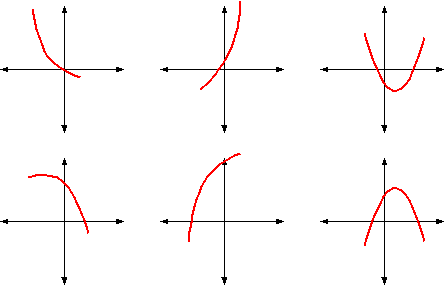
I'll leave to you to guess how to denote third derivatives. As to what a third derivative means, it's actually not that clear. But we haven't yet discussed what the second derivative means.
You can easily see what the first derivative of a function f means, in terms of the slope of the curve, or the speed of motion. The second derivative f¢¢ is a bit more subtle. It measures the slope of f¢, and since the slope of f¢ determines how f¢ is changing (increasing, decreasing, etc.), then f¢¢ tells you how the slope is changing. You can see that in the graph; in a region where f¢¢(x) > 0 , the curve will be ``curving'' up (or concave up).



But the real meaning of the second derivative f¢¢(x) relates more to
motion. If the position of a particle at time t is given by s(t) ,
then we saw that its velocity was v = s¢(t) . The second derivative of the
position, the rate of change of the velocity, is the acceleration
|
| |||||||||||||||
Example 2
Egbert tosses a baseball straight up, and measures its position at each time
t . He finds that the position s(t) (in feet above his hand) at
time t seconds t is
Find the velocity and acceleration at time t = 0 , when he let go of the ball.
s(t) = -16t2+24t+7.
[Idea for an interactive thing. The user chooses a number a which gives the initial velocity, and the animation then runs through the position at time t according to s = -16t2+v0t with appropriate scale.] Text: Choose a value for the initial velocity v0 . Pressing the ``toss'' button will show what happens when you toss a ball upward from its rest position with that initial velocity (velocity at t = 0 ). v0 should be between 1 and 40, so that you don't break anything.
Copyright (c) 2000 by David L. Johnson.